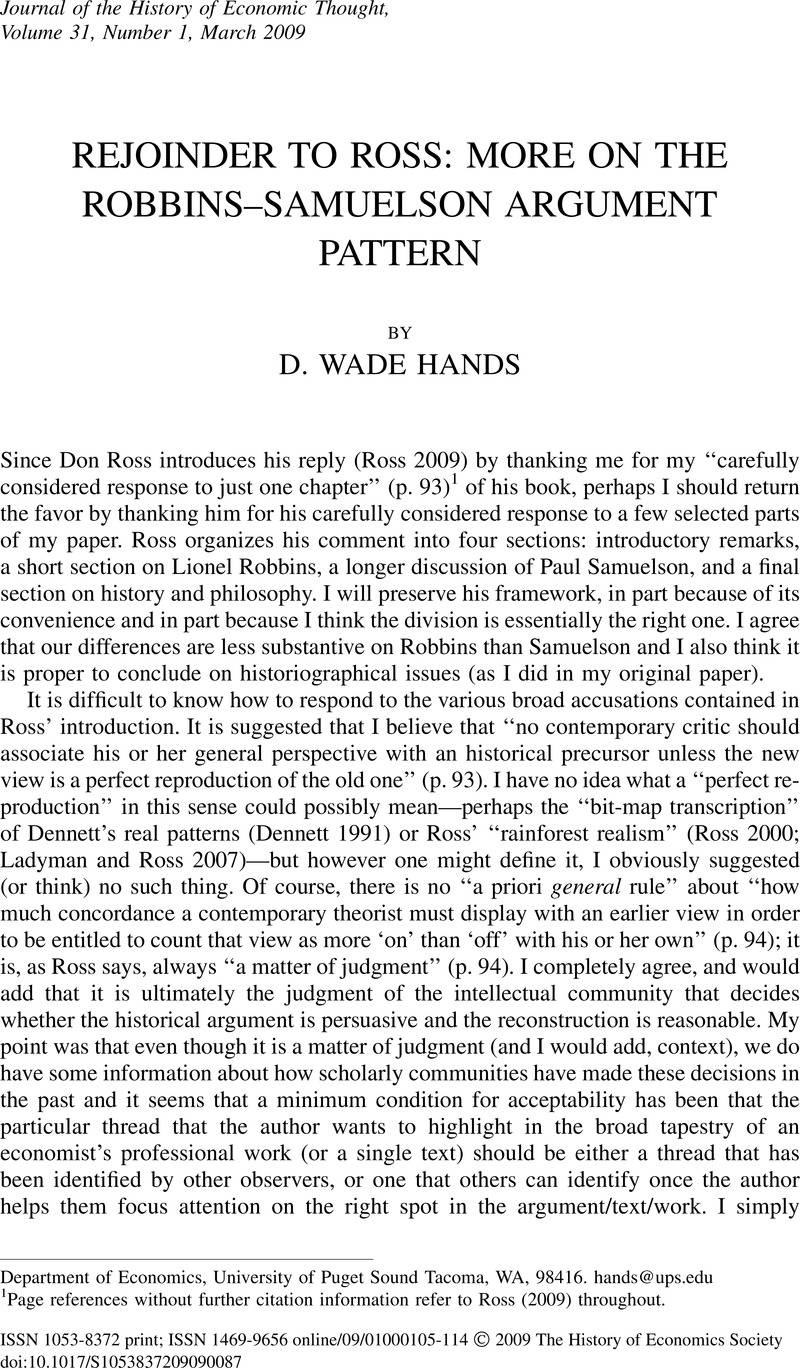Crossref Citations
This article has been cited by the following publications. This list is generated based on data provided by Crossref.
Hands, D. Wade
2011.
Realism, Commonsensibles, and Economics: The Case of Contemporary Revealed Preference Theory.
SSRN Electronic Journal,
Hands, D. Wade
2012.
Foundations of Contemporary Revealed Preference Theory.
SSRN Electronic Journal,
Hands, D. Wade
2013.
The Individual and the Market: Paul Samuelson on (Homothetic) Santa Claus Economics.
SSRN Electronic Journal,
Hands, D. Wade
2013.
GP08 is the New F53: Gul and Pesendorfer's Methodological Essay from the Viewpoint of Blaug's Popperian Methodology.
SSRN Electronic Journal,
Hands, D.W.
2016.
The individual and the market: Paul Samuelson on (homothetic) Santa Claus economics.
The European Journal of the History of Economic Thought,
Vol. 23,
Issue. 3,
p.
425.
Fumagalli, Roberto
2016.
Economics, Psychology, and the Unity of the Decision Sciences.
Philosophy of the Social Sciences,
Vol. 46,
Issue. 2,
p.
103.


